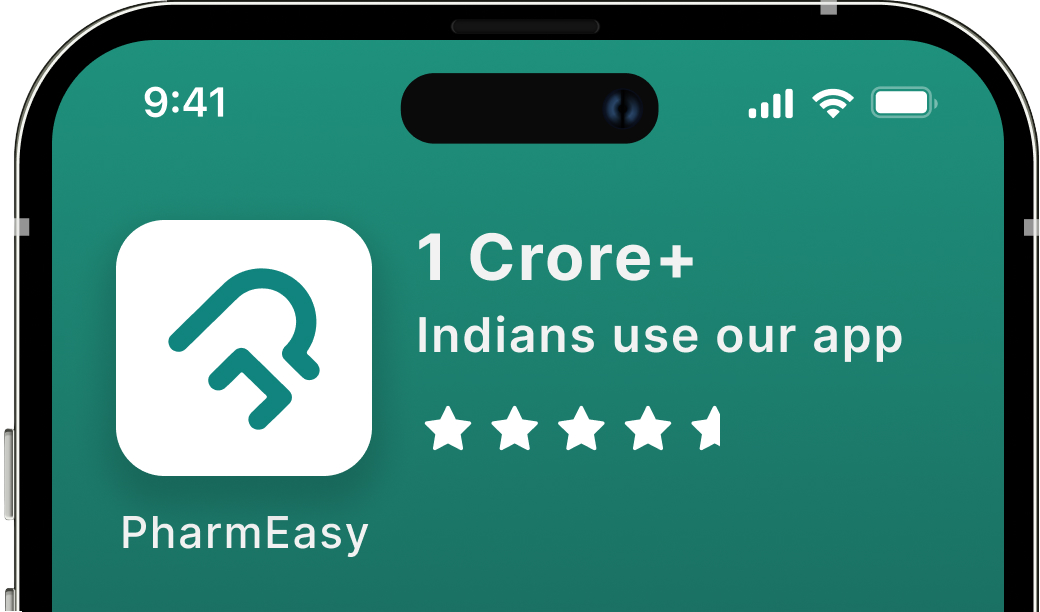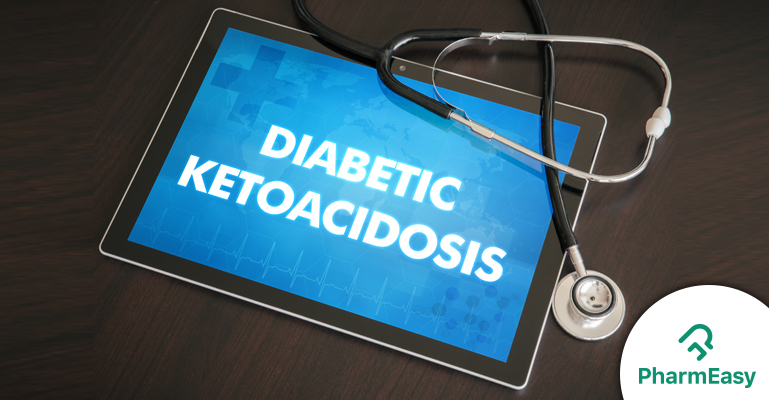Ketosis and Ketoacidosis: How Are They Different?
By Dr. Amruta Prabhu +2 more

Get,

to manage your symptom
Get your,


4 Cr+ families
benefitted

OTP sent to 9988776655



You’ve successfully subscribed to receive
doctor-approved tips on
Whatsapp

Get ready to feel your best.

Hi There,
Download the PharmEasy App now!!


Register to Avail the Offer
Send OTPBy continuing, you agree with our Privacy Policy and Terms and Conditions

Hi There,
Sign up on PharmEasy now!!
Trusted by 4 crore+ families

OTP sent to 9988776655



You have unlocked 25% off on medicines




Code: NU25
By Dr. Amruta Prabhu +2 more
Table of Contents
Though they sound similar, ketosis and ketoacidosis are very different.
Ketosis is a natural process where the body burns fat for energy, often during fasting or a low-carbohydrate diet. It may support weight management when done under proper guidance.

Ketoacidosis, however, is a serious medical condition, most commonly affecting people with diabetes. It occurs when the body produces too many ketones, making the blood dangerously acidic1.
Diabetic ketoacidosis is a complication that occurs when insulin levels fall too low, causing blood sugar to rise sharply. Without sufficient insulin, glucose cannot enter the body’s cells, leaving them starved of energy. To compensate, the body starts breaking down fat, which leads to the production of acidic substances called ketones.
As ketones build up in the blood, they make it acidic, causing a dangerous chemical imbalance. This condition can lead to serious harm, including damage to vital organs, loss of consciousness, and even death if not treated promptly.
Diabetic ketoacidosis can develop quickly, sometimes within just 24 hours. Common causes include poor diabetes management, infections (such as pneumonia or urinary tract infections), physical or emotional stress, certain medications (like steroids and diuretics), excessive alcohol intake, drug misuse, and recent serious health events such as a heart attack or pancreatic infection2.
The symptoms of diabetic ketoacidosis are as follows3:
Treatment of diabetic ketoacidosis usually involves the administration of insulin to lower high blood glucose levels, along with electrolytes to replace those lost through frequent urination, vomiting, or reduced appetite. This helps restore normal nerve, muscle, and heart function.
Prevention relies on maintaining good control of blood sugar levels. If your blood sugar consistently high, seek emergency medical care. It is advisable to keep urine test strips on hand to monitor ketone levels, particularly when travelling or feeling unwell. If the test shows moderate to high ketone levels, consult a doctor immediately. Drinking plenty of fluids can help flush out excess ketones, and continuing prescribed insulin therapy is essential. With timely medical treatment, symptoms often begin to improve within 48 hours. Your doctor may also adjust your insulin dosage to help prevent future episodes. However, it is important not to confuse diabetic ketoacidosis with ketosis. Although the terms may sound similar, they refer to entirely different conditions. Let us now explore how they differ1.
Ketosis is a natural biological in which the body burns fat for energy instead of glucose, typically occurring during fasting or when following a low-carbohydrate diet. Those on a ketogenic diet consume high fat and moderate protein while limiting carbohydrates, helping the body burn fat and become leaner. Ketones, produced during fat breakdown, supply energy to vital organs4.
Research suggests that a supervised ketogenic diet may improve brain function, reduce seizures, support certain neurological conditions, and enhance exercise performance. It can also help some people with diabetes manage their blood glucose levels effectively. However, ketosis is not suitable for everyone, pregnant or breastfeeding women, people with kidney problems, and those on certain medications should avoid it6.
For individuals with diabetes aiming for weight loss, having some ketones in the blood or urine is normal, provided blood sugar remains normal to prevent complications7.
Ketosis and diabetic ketoacidosis are two conditions that are often confused with each other. Ketosis is a natural metabolic state where the body burns stored fat for energy, whereas diabetic ketoacidosis is a serious complication of diabetes, usually type 1, that leads to dangerously high levels of acids in the blood.
Dr. M.G. Kartheeka, MBBS, MD (Pediatrics)
Also Read: Eat These 10 Foods To Fight Fatigue!
Ketosis and ketoacidosis sound alike but are very different. Refer to the comparison below for the key differences between ketosis and ketoacidosis1:
| Ketosis | Ketoacidosis |
| Supports the body’s functions | Damages the body |
| Low levels of ketones in the blood | High levels of ketones in the blood |
| A natural process of the body | Caused by poor management of diabetes |
| Generally safe | Dangerous and requires urgent medical care |
| Occurs from a low-carbohydrate diet | Occurs due to low levels of insulin in the body |
| Can occur in anyone | Affects only in individuals with diabetes |
| Does not require medical treatment | Needs immediate medical attention |
To help prevent diabetic ketoacidosis, it is important to monitor your blood sugar levels regularly, particularly when you are unwell. Keeping your blood sugar within the recommended target range as much as possible plays a key role in prevention. Always take your medicines as prescribed consistently, even if you are feeling well, as missing doses can lead to serious complications.
Dr. Ashish Bajaj , M.B.B.S., M.D. in Clinical Pharmacology and Toxicology
Also Read: 10 Healthy Fat Foods That You Should Be Eating!
Ketosis is a natural and generally safe metabolic state, often used to support weight management under medical supervision. In contrast, diabetic ketoacidosis is a serious, potentially life-threatening condition requiring urgent medical attention. Understanding the difference is crucial, especially for those managing diabetes5.
Disclaimer: The information provided here is for educational/awareness purposes only and is not intended to be a substitute for medical treatment by a healthcare professional and should not be relied upon to diagnose or treat any medical condition. The reader should consult a registered medical practitioner to determine the appropriateness of the information and before consuming any medication. PharmEasy does not provide any guarantee or warranty (express or implied) regarding the accuracy, adequacy, completeness, legality, reliability or usefulness of the information; and disclaims any liability arising thereof.
Comments

Leave your comment...
You may also like
Comments